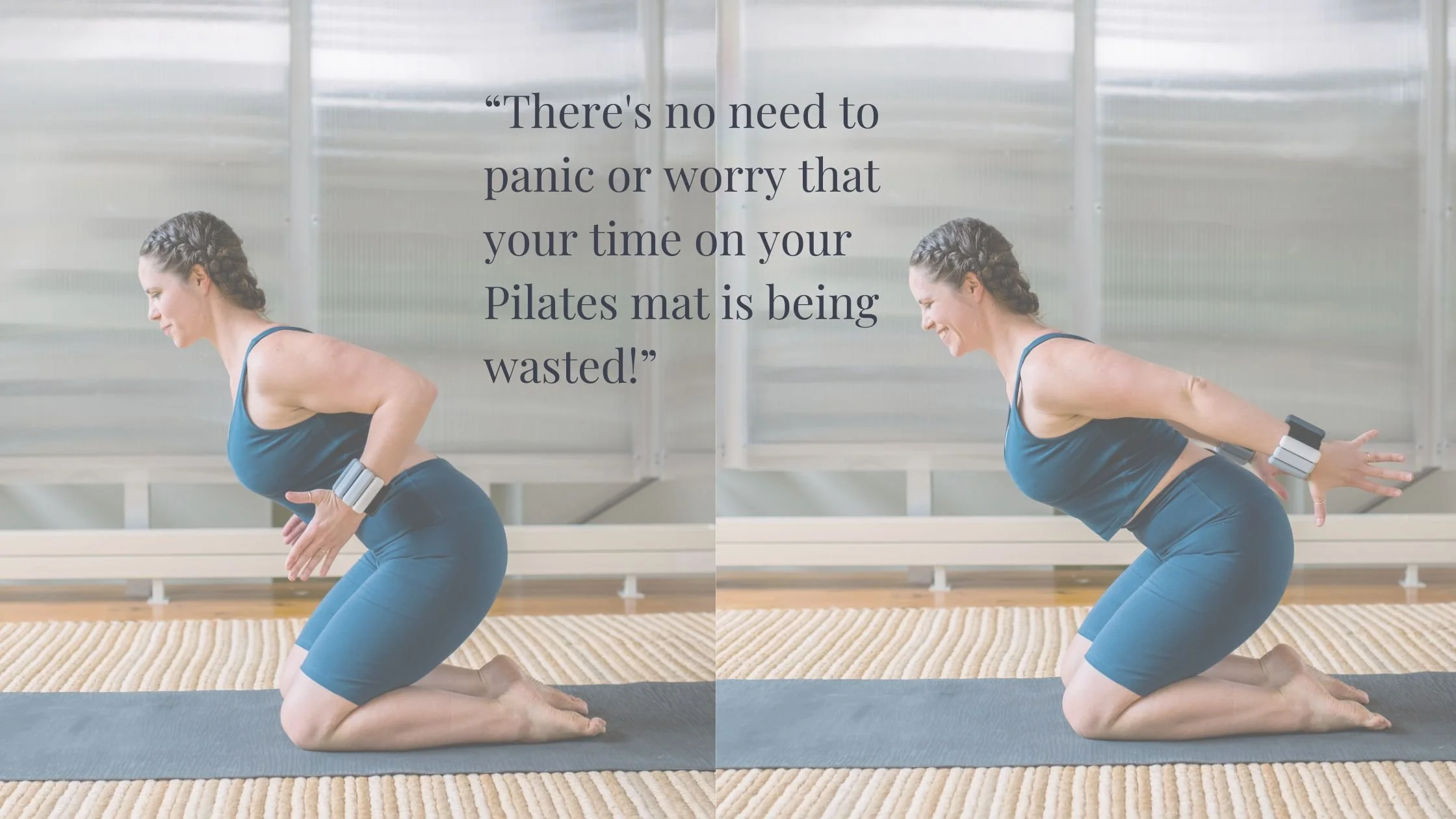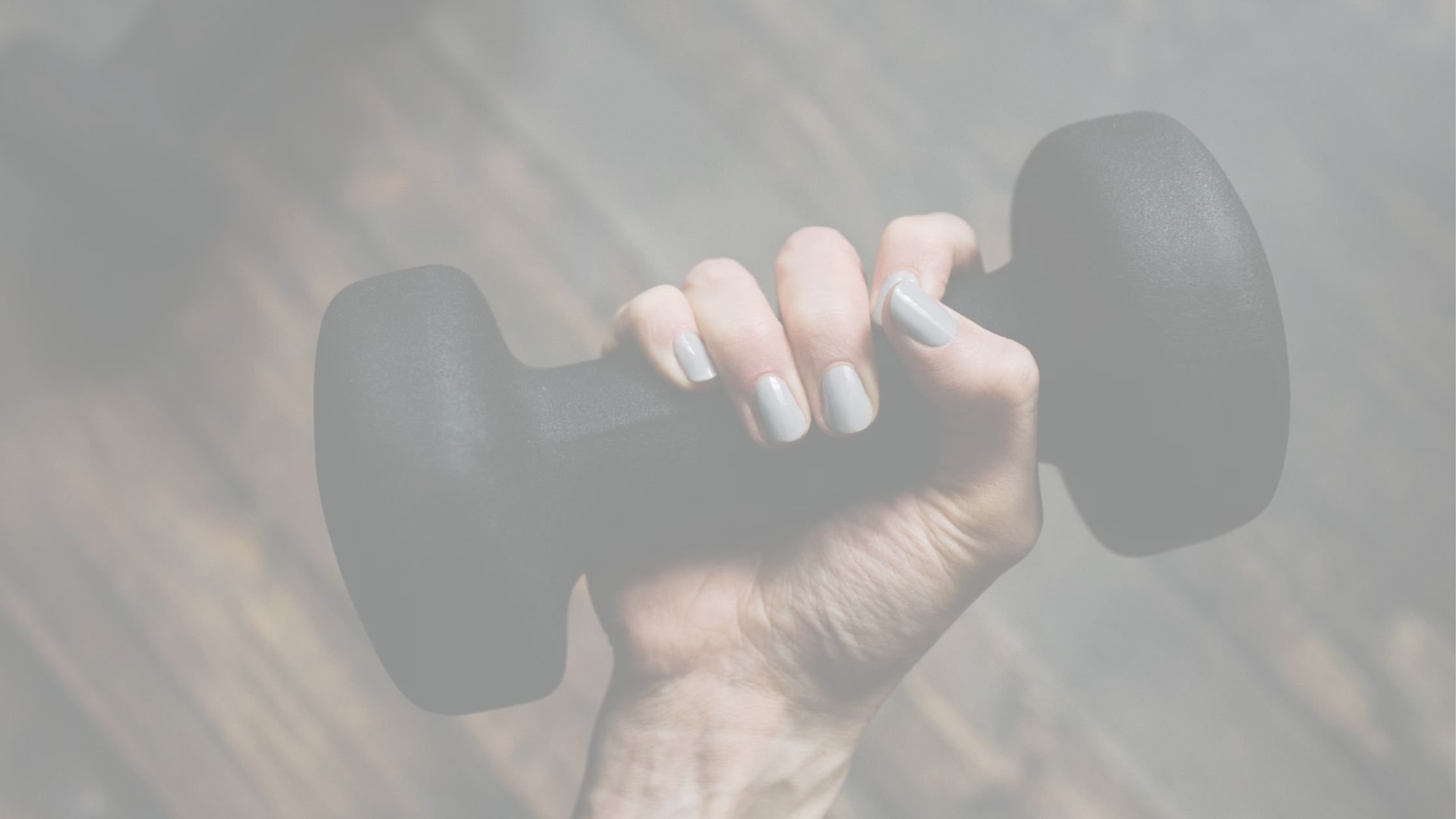How To Build Strength & Why Adding Some Heavier Weights To Your Pilates Workouts Is A Good Idea
The motivation to practice Pilates is often personal and varied. And yet, no matter what your fitness goals may be, maintaining muscle mass is crucial for all of us looking to age healthfully. With that said you don’t need to be “old” (whatever that might mean 😝) to begin physically addressing this either!
According to the American Council on Exercise, most adults over the age of 30 lose around half a pound of muscle annually. This raises the following questions:
How do we build muscles?
What actions can we take to prevent the loss of muscle mass as we age?
Building Muscle:
There are typically 3 primary mechanisms involved in exercise-related muscle growth: muscle tension, muscle damage, and metabolic stress. Generally these 3 aspects combined work to produce the effect of building muscle in the body. However, for our purposes we are going to focus specifically on muscle tension, because it is arguably one of the most important factors when it comes to muscle development and strength.
When exercising, mechanical tension refers to the force created by a muscular contraction, against an opposing force. For example: if you were to pick up a 10lb dumbbell and do a bicep curl, mechanical tension would be applied to your bicep (a.k.a. Upper arm) as you bend & straighten your elbow.
Mechanical tension, i.e. the amount of weight or load that you place on a muscle ultimately determines your muscles development, mass, and strength.
The Pilates Plateau:
Because there is a reasonable limit to how much mechanical tension (a.k.a. load) we can often create in a regular Pilates mat practice, long time consistent practitioners will often find that after a period of time that they have hit a Pilates strength plateau. Meaning that they are neither actively gaining nor losing strength or muscle mass, but rather simply maintaining whatever they have.
DISCLAIMER: There's no need to panic or worry that your time on your Pilates mat is being wasted! Pilates still works wonders for your body, enhancing mobility, muscular endurance, coordination, and balance, to name just a few benefits. Whether you're concerned about a strength plateau depends on your personal long-term health and fitness goals. Remember, movement is medicine. Numerous studies confirm that all forms of physical activity benefit the body. Exercise, in any form, is beneficial. So take a deep breath; you're doing great, and you've got this
That said, if one of your long-term fitness goals is to continually increase your strength gains in your Pilates practice, here are some options to consider once your body weight alone is no longer providing enough stimulus. This typically occurs when you've consistently practiced Pilates and built up a solid base of strength. At this point, it may be time to think about incorporating heavier weights into your workouts.
Progressive Loading:
Progressive loading entails gradually increasing the weight or level of resistance that you are working with, along with the frequency of repetitions in each exercise. This approach challenges your body to stimulate muscle growth and is something that should be done gradually.
Here are some rules of thumb for understanding the ranges you want to train in when you start progressively loading your workouts:
Increasing Resistance:
Train within 2-3 reps of failure. This means that if you are doing 10 repetitions of something (like a bicep curl) by the 8ths or 9th rep you will feel like you have physically reached the maximum number of repetitions that you could do for that set of exercises before needing to take a break.
Increasing resistance adds additional stress to your muscles and allows them to break down, rebuild, and get stronger. Once you feel comfortable working with a weight for 10-12 repetitions (a.k.a. It starts to feel “easy”) it may be time to decide to move up a weight.
Increasing Reps:
Increasing the number of repetitions you do in each exercise places more demand on your muscles and can make them stronger over time. For example, instead of trying to do 10 pushups, you could work on doing 20. Or for an exercise where we do multiple sets, like a plank hold, you could focus on extending your plank from 30 seconds to 45 seconds. This rule of thumb is particularly useful for exercises (like pushups) where adding more physical weight may not always be practical.
Concluding Thoughts: What actions can we take to prevent the loss of muscle mass as we age?
Maintaining a consistent movement practice is paramount. Whether it involves progressive loading or not, engaging in intentional and regular exercise programs will aid in preserving muscle mass and bone density throughout your lifetime. When unsure about what constitutes adequate exercise, it's beneficial to consult the CDC's Physical Activity Guidelines. Staying within these recommended ranges will undoubtedly contribute to your long-term health and well-being.
For those seeking an extra challenge and a desire to intensify their Pilates practice, True II Form has you covered! Explore our new STRENGTH classes designed to support your journey in incorporating additional resistance and heavier weights into your workouts. Get ready to take your fitness to the next level!
RESOURCES:
American Council of Exercise (ACE): https://www.acefitness.org/
Mayo Clinic: https://www.mayoclinic.org/healthy-lifestyle/fitness/in-depth/strength-training/art-20046670
CDC Exercise Guidelines: https://www.cdc.gov/physicalactivity/basics/adults/index.htm
Peterson MD, Pistilli E, Haff GG, Hoffman EP, Gordon PM. "Progression of volume load and muscular adaptation during resistance exercise." Eur J Appl Physiol. 2011 Jun;111(6):1063-71. doi: 10.1007/s00421-010-1735-9. Epub 2010 Nov 27. PMID: 21113614; PMCID: PMC4215195. Read the full article


